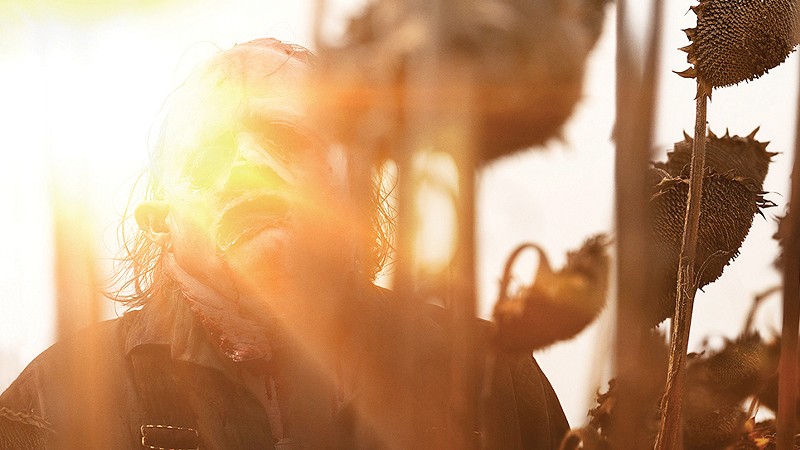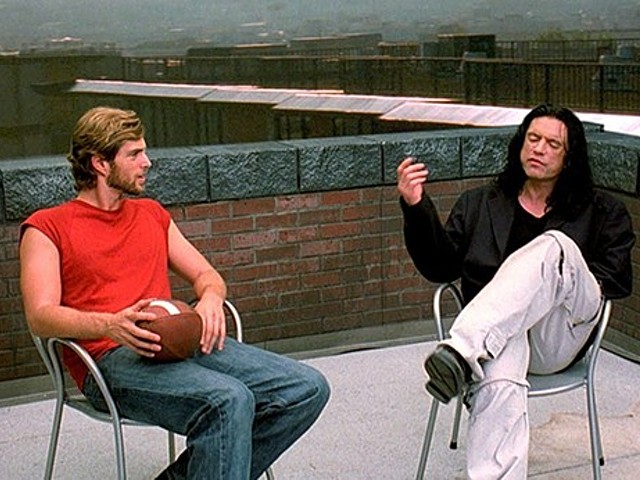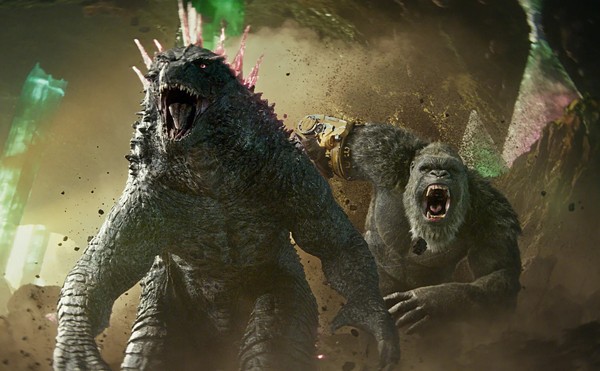
They say everything's bigger in Texas, which is accurate when it comes to the body count in Netflix's recently released Texas Chainsaw Massacre.
The movie is a soft reboot of the notorious film series that first shocked audiences in 1974, acting as a direct sequel to the premier installment while overlooking all of its subsequent sequels, reboots and remakes that pepper Hollywood every few years.
This new movie takes place nearly 50 years after the events of The Texas Chain Saw Massacre from 1974 (note: the title changes from "Chain Saw" to "Chainsaw" in 2022). In the original, a vanload of naive hippies are terrorized and then slaughtered by a sadistic family of cannibals in the Texas plains, leaving young Sally Hardesty (Marilyn Burns) as the lone blood-soaked survivor, with the killers still at large.
The killer cannibal family lived on the outskirts of Harlow, Texas, now a hollowed-out ghost town whose only claim to fame is the massacre Sally barely escaped half a century earlier. In the new film, various properties throughout Harlow are going to be auctioned off by the banks with help from Dante (Jacob Latimore) and Melody (Sarah Yarkin), two internet-celebrity chefs who plan to open their new restaurant in Harlow as a PR stunt to attract more buyers.
It turns out Harlow still has a handful of residents, including the old chainsaw-massacrer himself, Leatherface (Mark Burnham). He's been living in a vacant orphanage under the watchful, loving eye of a motherly figure (Alice Krige) who's managed to suppress the hulking serial killer's violent tendencies and likely improved his diet (less fatty meat, perhaps).
Leatherface is partially based on the real-life Ed Gein, a Wisconsin serial killer and grave robber who fashioned garments from preserved human skin during the mid-1950s. In similar fashion, Leatherface is seen wearing a mask made from the faces of corpses in the film, sometimes even peeled from a recent victim before they've fully died.
Once the film's plot gives Leatherface an excuse to start killing, there's not much to be said except that it's going to have everything you've come to expect from another Chainsaw sequel. However, that doesn't mean it lives up to the original.
Had The Texas Chainsaw Massacre released under any other title, unbeholden to what's expected of a sequel to such an important cinematic milestone as the 1974 original, it would have enjoyed a brief stint of popularity with diehard fans of the horror genre and then bled out to relative obscurity among countless other films of equally middling quality. Unfortunately for this film, they insisted on making a sequel to the original, a film that's not only responsible for cementing essential conventions for the burgeoning slasher-film genre at the time but is often credited with forever changing the way low-budget movies were made and received after its release. Alongside Night of the Living Dead, The Texas Chain Saw Massacre is one of the most critically influential horror films of the twentieth century. Those boots are far too big for Netflix's sequel to fill.
Sally Hardesty, now played by Olwen Fouéré in the wake of Marilyn Burns' 2014 death, is the film's weakest link. While most critics draw comparisons to Jamie Lee Curtis' character arc in the Halloween franchise's recent soft reboot, that's accurate but shortsighted. In this new film we see that Sally has turned her trauma from the '70s into armor. She's now a shotgun-toting Texas ranger, obsessed with the cold case that changed her life.
This kind of transformation is quite common in slasher-adjacent genre films, seen in earlier series like The Terminator and Alien — while the film's heroine (Terminator's Sarah Connor, or Alien's Ellen Ripley, for example) spends the first film in the series as a resourceful damsel in distress, by the sequel she's a stoic warrior who's ready to face her tormentor with equal violence. That Sally follows a similar path is not only trite, it's ineffective.
Sally comes off as a cartoon character who, in the greater scheme of the film's narrative, could have been cut without much consequence. If Marilyn Burns was alive to return to the role of Sally Hardesty it would at least seem somewhat justified, but that it's just a lookalike who does the best one can with such schlock makes her inclusion seem tacked on for half-baked fan service, as if the original film wasn't worth being taken too seriously.
And the way Leatherface can survive multiple shotgun blasts in the film, among many other injuries, strengthens that suspicion; Leatherface should be well into his 70s at this point.
Bad Hombres, the production company responsible for this new film, boldly states themes all throughout runtime, leaving nothing left to be interpreted. They clumsily handle topics like gentrification, late-stage capitalism, school shootings, toxic masculinity and the flimsy "heritage not hate" argument used by people who fly the Confederate flag yet insist they aren't racist. While these are all relevant talking points, they're just not competently strung together as well as one would hope from a legacy sequel to such a culturally significant film. Mind you, this is not the worst sequel in the series and any excuse to bring up the 1974 classic is a welcome addition to my Netflix queue. Sadly, you can't watch the first Texas Chain Saw Massacre on Netflix, only its 2003 remake and some lesser sequels and a prequel at present, so you'll either have to dust off your old VHS copy or stream it on Shudder.
If you like overindulgently gory films, then there's an abundance of shocking effects throughout Netflix's Texas Chainsaw Massacre to help justify a viewing, regardless of its plot, cinematography or score. If you want to see what it would look like to cave in a man's head with a hammer — Texas style — and aren't bothered by a film that is incapable of subtlety, go for it. I highly doubt anybody will sign up for a Netflix account just to see this film, though the cast should be commended for their performances.
The movie is like an old chainsaw wielded by an inexperienced woodsman: The chain's loose, it's not too sharp anymore, and the filmmakers don't exactly know how to use what's in their hands. If you're familiar with chainsaw safety protocols, that's a recipe for disaster.





